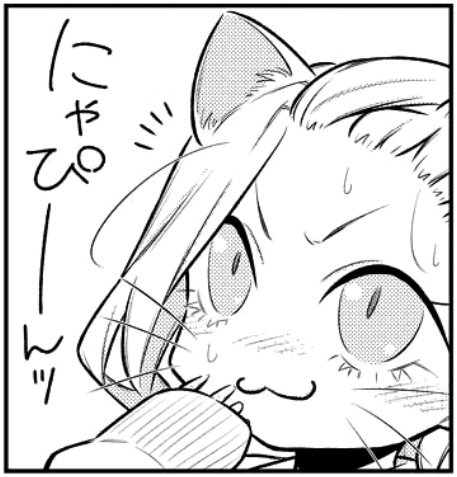It sounds way less offensive to those who decry the original terminology’s problematic roots but still keeps its meaning intact.
I’ve seen ‘Active / Passive’ used, that seems alright. There’s plenty of alternative terms to use without borrowing terminology from sexual roleplay.
Anyway, the Sub is supposed to be the one that’s actually in control for this kind of thing (otherwise you’d just be in an abusive relationship), so that confuses things when you start trying to applying it elsewhere.
Top and bottom
Power bottoms would like a word with you.
Hopefully more than a word
Current is flowing when probing the shunt. It’s getting a little hot
The issue is acronyms; there’s millions of products, schematics, datasheets, and manuals that refer to them as MISO and MOSI with no further explanation. Any new standard that doesn’t fit runs into the 15-competing-standards problem, and ought to be followed by an “AKA MISO” every time it’s used.
I’ve seen “Main” and “Secondary” be used exactly for this reason, as they keep the same first letter so don’t require acronyms to be changed.
I’ve seen “Main” and “Support” be used likely for the same reason
Just have to find synonyms that begin with the same letters, possibly in different languages.
Other countries all use the English terms.
Except for the French, probably.I was thinking of synonyms in different languages, like magister and scholasticus, which are teacher and student in latin.
Mylord and Squire
M’lady and Squire.
M’lady and suitor?
I’m the passive one in my relationship.
Anyway, the Sub is supposed to be the one that’s actually in control for this kind of thing
I think there’s a better way to put that. It’s often called a power exchange. Both people involved can rescind consent at any time, and there’s also negotiation that happens before scenes to set up expectations and limits, but I don’t know too many subs that want to be in control of a scene. My experience is they want to give up control in a way that is safe.
Yeah, you’re right, that was a clumsy word choice. My experience is mostly from watching The Duke of Burgundy tbh
Hadn’t come across that one, might have to check it out.
I’ll always like Primary/Secondary.
Agreed.
Also active/passive gets confusing crossing over into electronics where they already mean something.
I thought the connotation was chattel slavery, not BDSM.
the connotation in that the master is in control and the slave having no control, and ironically is only a racial issue in the US
I’ve seen ‘Active / Passive’ used, that seems alright
That’s not always an accurate description though.
Consider a redundant two node database system where the second node holds a mirrored copy of the first node. Typically, one node, let’s call it node1, will accept reads and writes from clients and the other node, let’s say node2, will only accept reads from clients but will also implement all writes it receives from node2. That’s how they stay in sync.
In this scenario node2 is not “passive”. It does perform work: it serves reads to clients, and it performs writes, but only the writes received from node1. You could say that node2 slavishly follows what node1 dictates and that node1 is authorative. Master/slave more accurately describes this than active/passive.
There’s plenty of alternative terms to use without borrowing terminology from sexual roleplay.
Do I have news for you …
deleted by creator
Active / passive means something different.
Master / slave means one thing tells the other thing what to do, and the other one does it without question. The slave is not passive in performing the task.
It’s a relationship that should never occur between humans, but it does occur with machines. The terms describe what is happening accurately. Other synonyms are approximations and lead to confusion in a field where confusions cause bugs / failures and depending on what you’re working on, that could put lives in danger. Do you really want such confusion around the systems of an airliner, where everything has redundancy, master/slave relationships are common and something being passive means “it’s only monitoring what’s going on”?
You want more Boeings? Shit like this is a good way of getting there.
I seem to have stumbled into an argument that people are more passionate about than me. I mentioned I’d seen ‘active/passive’ used (in computer networking), and in that context, it ‘seems alright’ (in the sense of actively giving demands, vs. passively accepting them [and doing what it’s told, of course])
If someone has made good-faith request not to use certain terminology (like Master/Slave), then I’m generally more interested in finding acceptable alternatives than I am in dismissing their concerns outright. If, at the end of a proper search for alternatives, nothing suitable can be found, then fair enough. I’d question the idea that it’s really impossible to find something else though, but - for now at least - I’m sure that Dom/Sub isn’t it.
Same here - I’m more interested in a suitable alternative than to argue whether they are justified in their concerns.
I don’t think there’s a single right answer though. This terminology is used in many scenarios, each a little different and each with a potentially different answer
- Most git distributions now default to “main” and some variation of branch. It was a trivial change and seems as meaningful.
- Jenkins changed from master-slave, to controller-agent (or node). I’m still getting used to it but no big deal.
- Many DB or service distributed systems changed from master-slave(s) to primary-replica(s) and that also works
Wait until you find out how many programmers don’t even speak English. They must not be able to understand any of this if it’s so confusing to native speakers, right?
The consequence of updating language is not plane crashes. You need to update the version of the human interaction API that you’re using.
Also pub/sub is already estsblished and used as common computing abbreviations
No it doesn’t sound bad, words don’t need to be thrown away forever just because they’ve been used to describe unfair treatment. I’m so sick of having to relabel so many things that are so far divorced from the social issues they are used to describe. It’s so pointless and has no impact, the code doesn’t care which is master and which is the slave for they are simply descriptive labels.
Are we supposed to never use the words master or slave ever again?? What’s next?
My dev friends, no matter their race, all say the exact same thing. We still use master over main, come at us I guess.
Removed by mod
It’s all good and well until you start working in a repo that has both master and main branches for some reason, and it is not clear which is actually the master/main branch.
Then you’re working in an idiotic repo. You could just as well have have a master and an actual_master branch. Similar idiocy.
It only takes one person to fuck it up. I agree it’s stupid, but introducing a conflicting standard increases the chances of someone fucking it up in the name of progressiveness. Needless to say I killed off the main branch that someone one had tried to make to replace the master branch.
A place I used to work at had that… The corp had rolled out a non-delete policy with something akin to
, so when someone made aabrv_masterbranch it got protected and couldn’t be deleted anymore.
I work for s company that suddenly asked to rename a lot of stuff. This had consequences. It cost time, money, and created a disconnect between internal to the dev vocabulary that couldn’t be changed easily and user facing vocabulary. Also we were lucky but this could gave broken some long used API that we are proud not to version because the policy we have internally is “we will NEVER break the API”. And so far, for 8 years we still haven’t.
Removed by mod
This
The problem with these token activism is that it’s hollow in content. The intent might be good, but the action is almost pure virtue signalling.
Slavoj Zizek pointed out in multiple interviews that there’s a pervert self-reflectiveness in the self-censorship: privileged people “enjoy” being guilty of their privilege, so it’s more about themselves rather than the people they claim to represent. “Sorry, but you were naive and unaware of people being racist when they use these words, so let me stop them and now you are protected (by me) in an inclusive atmosphere.”
A related radical freedom situation as an inverse to the above is that when friends get really close, even using racist slurs is treated as a gesture of intimacy, rather than racism. In an ideal world, the context in the public discourse would be so strong that even racist words lose their racist meaning (“oh, so you are joking as well”) rather than the opposite (assuming there’s ubiquitous “hidden” racism in the use of a word, even when there’s clearly none).
Another critique is that it presents itself as a substitute of real solutions. Instead of addressing real problems, it provides a simple “everyday” solution, very much similar to the recycling movement. Of course we need to recycle, but we should be aware that it’s not a substitute of radical real actions (e.g. stopping the big oil).
Right? I get that langauge evolves and things go in and out of fashion, but this self-censoring for things completely unrelated to the original or derogatory meanings is kind of a pointless exercise to me.
master over main
That one is the most stupid one too, because master in git doesn’t even refer to a master/slave relationship. It refers to a different meaning of the word master, namely “an original from which copies can be made”, as in master recording or master key. See 5b in the Merriam-Webster dictionary. And that’s how it’s used in git: any new branches are derived from master. Main just does not have the same nuance, because it does not imply a relationship between the branches, just that it’s somehow more important than the others.
But of course, the real reason it was changed is because for companies like github it’s easier to give in to the crazies who demand this than to fight them.
Is it not the main working branch? Git is a system of change not just recording change. When you start a new project, do you open a new branch or create a whole new repository? That’s not rhetorical I’m genuinely curious.
Is it not the main working branch
No it is not. On large distributed projects for which git was designed, you typically don’t directly work on main/master but you create a working branch to do your changes, and when they are ready you merge them to main/master.
There are many types of git workflows, but main/master usually contains the code that is deployed to production or the latest stable release and not some work in progress.
When you start a new project, do you open a new branch or create a whole new repository?
You have to define “project” for that.
- Is your project a change to existing code -> new branch, merge to main/master when done
- Is your project something new that stands entirely on its own? -> new repository
In fact, many projects forbid pushing to master entirely and only allow reviewed merging to the master. Then, every time the master changes, a new release of the software is made (either manually or automatically with CI/CD)
Ah we develop the same way. There’s testing then staging then prod is final review and is then finally merged to Main after documentation. Main branch is protected and merges are gated by review. There’s no need for master terminology there.
There’s no need for master terminology there
Nobody said there is a need, you could call it foo or bar and it would still work. It just that master more accurately describes what it is. Main for example does not describe a derivative relationship, master does.
Also, master in this context is totally unrelated to slavery so I could also just as easily say that there was no need to replace the existing terminology either. It doesn’t solve any real world problems of historic or currently existing slavery, and it doesn’t make anyone’s life better. The only reasons why it was done were appeasement and virtue signalling.
Sure, so if there’s no need for any certain terminology outside of an agreed upon definition what does it matter if it’s called master or main or unicorn farts? Why care about Master at all?
Why care about Master at all?
I’ve already explained all my reasons, but I’ll reiterate. To summarize I basically have five main issues with it
-
The change was done in response to attempts at language policing and bullying by a vocal and militant minority. Giving into it is a form of appeasement towards an unreasonable demand.
-
The change retroactively modifies a terminology that was already agreed upon. Like, if git sprung into existence today, not many people would have an issue with it if they would call it main or trunk or primary from the get go. But that’s not what happened. Git was released in 2005 and it used master terminology. As a consequence, many existing repositories also use master. Now when someone is working with branches, like doing merges or pull requests, they suddenly have to remember: oh in this repository it is main, but in that repository it is still master. Or they have go out of their way to modify decade old repositories, potentially breaking all kinds of behind the scenes CICD stuff. Or they have to go out of their way to revert the default on all systems that they’re working on back to master. In any case, this change is a source of errors and wasted effort for zero net good.
-
It does no good in the real world other than making do-gooders feel good about themselves, and giving a capitalist entity some PR to appear more progressive than they are. We all still have masters, existing slaves are not freed, no historical wrongs of slavery or inequality are righted.
-
It’s a misguided change in this case because the word master in this context doesn’t even have a relationship to slavery. Just like a master degree you may hold, or a master key or a master recording of your favorite album have no bearing on slavery. Note that there are no “slave” branches in git.
-
Finally, in the case of git, master is simply more accurate than main because it carries a nuance (derivativeness) that main does not.
-
deleted by creator
In our environment Prod is only a holding area, the change/feature/bugfix is already approved for production, once the change is documented then the merge happens into main and Prod is consumed.
Our “working” branches are ephemeral.
Seems like what we use “RC” for (Release Candidate)
you don’t work on main/master, you make a branch to work in, and then merge your changes back into master/main
Respectfully, I can do whatever the fuck I want. That’s the point of git. If I want to branch my way down to a stack overflow due to running out of free memory my system will very happily let me do that.
I’m a dev, and I’m the opposite. At my work, we use main over master. I thought it was a little silly when we first switched, but now I’m used to it. It’s an arbitrary label anyway – could easily use trunk/branch from SVN or release/develop or any number of other labels to keep track of code.
Hell, we got a new dev on the team a month or two ago, and he tends to name things ‘feat/do-the-thing’ instead of ‘feature/make-it-go’.
It’s not as big a deal as people online make it out to be.
No one told you to throw away anything. If it works for you then go wild. No one else cares what you do in private or a with your “dev friends”.
I for one love shorts words to get meaning across. “main” was just sweet, the social issue thing was a good to have.
unfair treatment.
We’re talking about slavery here.
sick of having to relabel
It’s not that hard…to be accommodating.
divorced from the social issues
from your point of view
the code doesn’t care
You’re right. Call it a controller and agent. I know naming is hard, but we’re smart enough to apply our lexicon.
never use the words master or slave ever again? What’s next??
Ah, the slippery slope fallacy.
We still use master over main
The default for new repositories on GitHub has been main for awhile now. You would have had to put in effort to change it to something else. You’re a stick in the mud.
The default for git repositories is still master. Not to be the “real programmers only use CLI” guy, but I feel like
git initisn’t too hipster.…which you get a multiline message telling you to change your ways (Linus doesn’t break UX)…every time you init…weird.
$ git init hint: Using 'master' as the name for the initial branch. This default branch name hint: is subject to change. To configure the initial branch name to use in all hint: of your new repositories, which will suppress this warning, call: hint: hint: git config --global init.defaultBranch <name> hint: hint: Names commonly chosen instead of 'master' are 'main', 'trunk' and hint: 'development'. The just-created branch can be renamed via this command: hint: hint: git branch -m <name>Gonna be honest, I don’t think I ever read that. I think I usually just do
git statusimmediately after to see if all’s well.
The default has been main for awhile.
This is the case in our current version of git (git version 2.28. 0). As of October 1, 2020, any new repository you create on GitHub.com will use main as the default branch.
March 2021 for gitlab
Still the default in git.
…but recommended to be changed every. single. time. you git init. https://lemmy.world/comment/11895670
can you point where ANYTHING is recommended at all there?
Cause it simply says that you can change the name. But “master” is the default. That doesn’t sound like a “recommendation” at all. But just making people aware since some repositories try to force things like “Main”. Almost like the repo you’re using might be enforcing shit that Git in of itself doesn’t give a shit about.
which will suppress this warning
“I’m going to be annoying you until you do something about it” It is recommending that you take some sort of action, that choice is up to you as the user. In fact, the older way of disabling the warning was called
advice.defaultBranchNameAFAIK git is still Linus Trovalds’ project and one thing he is known for is “you dont fuckin break user space”. That is acknowledged in the pull request https://github.com/git/git/pull/921
“will minimize disruption for Git’s users and will include appropriate deprecation periods”.
Linus is also a fuck-your-feelings kind of guy so deprecation_period == linus_date_of_death. No, I’m not implying Linus is racist/bigot, just that he feels that strongly about breaking user experience.
Git in of itself doesn’t give a shit about.
You’re right…and that’s why its unbelievable to me how some people are still (it has been nearly 4 years since that PR above) resistant to change this one little thing. This is just the initial branch that we’re talking about here. Git doesn’t care if you:
git init Initialized empty Git repository in /home/xxxxxx/tmp/.git/ touch foo && git add foo && git commit -am "foo" [main (root-commit) 9c74dd1] foo 1 file changed, 0 insertions(+), 0 deletions(-) create mode 100644 foo git branch -a * main git checkout -b bar Switched to a new branch 'bar' git branch -d main Deleted branch main (was 9c74dd1). git branch -a * bar git log commit 9c74dd18d493fec727e6ce9e4ba71ed356dd970d (HEAD -> bar) Author: Butters Date: Thu Aug 22 00:14:44 2024 -0400 foo
Github != git.
No shit? Let me guess; you’re still using git like Linus intended it to be, decentralized, by emailing each other tar.gz’s
No. I’m just not willing to attribute a COMPANY as the sole owner/stakeholder in a protocol that honestly has very little to do with them.
Just because Github does something, doesn’t mean that they represent git.
I just used the most popular/known example. Personally I haven’t liked GitHub since Micro$oft bought them. I’m ol’ school, 25 years in the biz so M$ really really leaves a bad aftertaste in my mouth.
I’ll answer your other question in the other thread.
Fuck I don’t get your downvotes, you’re right. I get people want to vent but in the greater scheme of things having to use different words to be a smidge more inclusive isn’t that big of a deal or effort considering what some of us do to help our friends be accepted.
It’s so weird that so many people are calling being accommodating in such a small way “performative” or whatever! I think some people just can’t handle change and blame others for it.
or it’s just literally performative and doesn’t actually change anything about the realities of being POC in America other than making (ironically) a bunch of white people feel good about themselves.
Okay then, I’m being performative. I feel better about myself, thanks.
unfair treatment.
We’re talking about slavery here.
sick of having to relabel
It’s not that hard…to be accommodating.
divorced from the social issues
from your point of view
the code doesn’t care
You’re right. Call it a controller and agent. I know naming is hard, but we’re smart enough to apply our lexicon.
never use the words master or slave ever again? What’s next??
Ah, the slippery slope fallacy.
We still use master over main
The default for repositories on GitHub has been main. You would have had to put in effort to change it to something else. You’re a stick in the mud.
I remember back in the late 90s being in college. I brought my girlfriend to class one day. She raised her hand after the professer was explaining Master/Slave roles. Keep in mind, I’m white. She’s black. She’s not enrolle
d in this class AT ALL.
So the professer sees this, and says “Yes, you there, girl I’ve never seen in 4 months of this class”
And all she said was “Master and Slave drives? That sounds sexy!”
The whole class facepalmed.
… sounds like she was fun!
deleted by creator
I personally think the whole backlash against master/slave in the computing world is people looking for something in their sphere of knowledge to be offended about so they can feel like they are part of “a movement”. Even if some mustache twirling racist was the first “computer guy” to come up with the term and meant it to be offensive, that is not how sane people view it today. So some of the advocates for changing it should stop trying to build it up into some Pizzagate-like conspiracy against black/brown people.
Having said that, I also don’t have any strong attachments to the phrasing either. Phase it out in favor of something that makes everyone happy if that keeps the peace. It is just a term that made sense at the time to describe something. There is nothing stopping us from changing it to something else now if we so choose. It is not erasing heritage or some such nonsense. If anything, people having strong hangups about it if there are better or equally as good terms out there that doesn’t make people uncomfortable is far weirder in my opinion.
The only thing I have somewhat strong opinions about is making it some high priority to go back and erase those terms from solutions that already exist. Change them as you update things, sure, but why create extra work to update something old that is currently working if the only change is not functional and just verbiage. Seems like wasted effort that could be better directed and solving functional issues to me.
I don’t have issues with the original terminology either, and wouldn’t really care if it was changed. But if it were changed to Dom/Sun then it would reinforce the meme of the stockings wearing femboy programmer. XD
I use ‘main’ on git instead of ‘master’ now (forced to change at work) and its shorter and snappier IMO.
But yeah there are more important problems out there.
The master in master branch is, I’d assume, from the idea of Master copy which refers to the original of something, eg a recording, drawing, etc. https://www.collinsdictionary.com/dictionary/english/master-copy
I’m not hugely tied to the word, and things change … So meh.
While I agree with your assumption, I think main is less vague. Master can be interpreted several ways, including an offensive one. So while I agree with other commenter in that it’s unnecessary to go back and change things retroactively, but just setting the default branch name for new repos in your version control to main is a fair thing to ask IMO.
including an offensive one.
Is the code going to be offended? If so it’s probably already offended by it’s likely very bad code quality and lack of maintenance and repair.
Not the code, but some of your coworkers might potentially be offended.
Also good job with the ad hominem.
obviously the code wont be offended, i was just shitposting.
As for the code quality, it’s not adhom, it’s literally just true. Go ask any seasoned programmer, any senior dev, or any junior dev, they’ll tell you it’s all dogshit, except for the one pet project they have that hasn’t ballooned into a mess yet.
And if you need proof, go load a website, tell me how clean and responsive it is. Surely it has no issues, and works on a cross platform standard. Oh wait it doesn’t, surely that’s do to a feature difference right? What’s that? Spoofing the user agent fixes it? Hmm.
Oh, as a programmer myself I’m perfectly aware of how shitty most codebases are. It’s just that the context you said this in implied that people who care about political correctness are worse programmers. Dont act like this wasn’t on purpose and hide behind “shitposting”.
When I start “whipping up” the pull requests, I’ll make sure to “rape” your suggestions
That’s offensive too. Proper terminology is “con/noncon”
deleted by creator
I insist on renaming main to master every time I create a repo on GitLab. Master forever, even if it doesn’t make much sense.
That makes no sense whatsoever.
most things in life make very little sense, have you ever thought about land rights?
deleted by creator
considering the way that native/aboriginal people view the land that they inhabit, it’s pretty common for certain geographic places to be considered “sacred” or ritualistic. Prior to the colonization of these lands these people just existed, living on their land, little to no concept of “westernized land rights” until the western people showed up and colonized, killing a lot of them in the process.
And obviously there were fights, as per usual it’s the one constant behind who holds what land. But beyond fighting for your territory in a literal sense. Isn’t it funny that we all live on a piece of land that we bought and own or lease/rent from the local government? Who in turn is the legal rights holder of that land specifically. We as individual land owners aren’t fighting wars, it’s the government in this example who is the “haha i killed you it’s my land now” entity. Only to turn around and then go “here, you can have this but only if you give me money.”
Aside from the little slips of paper that we have, which are so called “binding agreements” between two or more individuals. The only thing that defines who owns what land, is who defends that title of ownership most successfully. And in this case, it’s the government. But the concept of land ownership itself is fucking stupid to begin with. How much land do we own? How do we own it? to what level of ownership does having a plot of land constitute? There are so many questions, and very few are answered.
You may own a piece of land, but if you have a river running through that property, you don’t own the river. It’s not a thing that you can do. You could also own a piece of land, say for example a random sand dune in indiana somewhere. And then consume that sand dune in the process of making funny blue colored glass for electrical insulators. Do you own the sand anymore? Do you own the land where the sand once was? Does that piece of land even exist anymore?
I just need to be able to say “GET OFF MY LAWN, PUNK”
It makes sense because “master copy” is the name of the “official” version of something. Nothing to do with slavery by the way.
But “Main” is more clear, and putting in extra effort to basically just piss off politically (over)correct people doesn’t make any sense, and is kinda weird tbh
It’s already not the master copy if you have release branches or tags, but it is the “main” branch 🤪
I don’t know about Scrollone, but I hate it when corporations force me to change for the sake of change. Options to change is fine (in case someone doesn’t like the default), of course.
And no, “inclusivity” is not the actual reason, as that’s already covered by adding the option to change (which again, is completely fine)
So you are not passively against progress, you are doing it actively.
Has very much “vinyl is better than modern media” vibes.
And I’m proud of it :)
people looking for something in their sphere of knowledge to be offended about so they can feel like they are part of “a movement”
I always thought it was just people looking for something in their sphere of influence that they could do to make a difference, no matter how small.
The computing world is known for being hostile toward most out-groups, and I’ll welcome any effort to change that, no matter how small and how silly it seems. The real change needs to be in the people but perhaps being cognizant of such details will help remind us all to be more open and welcoming
while in some ways I can see your point, I would just have a hard time saying this in a work meeting here in the deep south with black colleagues present
most sociologists and some psychologists would refer to this as a subconscious, or subdued form of racism.
it is kind of silly a the end of the day. How a terminology originally referring to a power dynamic. Has been so excessively ingrained in relation to race (which isn’t very historically relevant) such that even using these terms in a generic capacity, not relating to in any form what would constitute this “negative slavery” concept, that it makes people feel uneasy, summarizes rather weirdly, the human condition.
maybe this is just my autism speaking, but i see so little resemblance contextually, and almost zero historical relevance that i see almost no connection between the words and the practices at hand. Like you could do a wikipedia speedrun from technology to slavery, but you could also do that from any topic, to slavery. Everything is so interconnected there is nothing pure anymore.
Whitelist and Blacklist is on that stack as well.
this is actually a terminology that i would be interested on seeing the historical context for actually. My assumption has always been light based “whitelist referring to a well lit room, where as blacklist refers to a completely dark room” making things easy/hard to find as a a result.
It could also literally just be a coincidence and it simply sounded better for the allow list to be whitelisted, and the deny list to be blacklisted, humans have weird connections to words like that.
Fucking thermodynamics is racist guys
Black absorbs, white reflects
Blackhole, sun
fuck these people
For most people it’s a lot more simple and subconscious than that. White=positive, black=negative. Most people do not consciously apply this to race, but they don’t have to for the subconscious association to take root.
Bro I fucking said “whitelist” in a meeting and got so many glares, fuck all of these fucking uneducated pieces of shit that can only punch down because they know nothing except “DATS RACIST”
Welcome to Orwell-ville.
PS: im most amused by those who think the USA incented slavery.
The US may not have invented it, but there are still people in the US who are affected by it today.
Americans care about slavery for the same reason that Germans care about Nazis.
^
Ya know what gets my goat? Right Wing Chuds who ask why white people don’t get credit for ending slavery…
I dunno, why is it that when I point a gun in someone’s face and decide to shoot him in the leg instead, do I not get credit for preventing his murder?
Oh because he’s worse off than he would have been if I had done nothing at all? Because the only reason he was ever in danger of being killed was because of MY actions?
Congratulations, you’ve solved the riddle.
Some white people have generational wealth to fall back on No black people have that because the Klan burnt down black wallstreet.
And red-lining districts, and bull-dozing new black towns for highways. etc etc etc
There are so many instances of going around laws just to disadvantage black/coloured people.
Pulling the ladder up after themselves and telling others to pull themselves up by their bootstraps.
Many things were wrong, but language is where people draw the line, like … c’mon. Using slurs I can understand it is uncouth offensive. But master/slave in technical terms ??? NO ONE means the original meanings unless they are also crazy!
I keep trying to tell people that White Privilege doesn’t mean you have an easy life because of your skin color, as a honky myself I’d be heavily offended if anyone legitimately believed something so naive as the idea that I lived on easy street. That my lack of any thing even coming close to a tan put me in some elite club. I very much do not as I live paycheck to paycheck, often having to buy essentials like food and gas on credit, whilst having to live with family and use food banks to get by.
However, no one’s out here actually arguing that being white makes my life easy because that’s not what white privilege is.
White Privilege simply means that out of all the things working against me in this dog-eat-dog world of late stage capitalism and constant culture war, my skin color is not one of them.
Agreed. The systemic exclusion of POC from benefits and advantages was rolled back just as POCs were becoming independent. It affected BOTH communities , POCs AND economically dis-advantaged equally.
So you had a substantial population with severe economic and political disadvantages being relentessly targetted by those in power.
Hence, the current top-1% control 80% upwards of everything.
Given the current US prison system and Germany’s stance on Israel, that sentence might mean something very different from what you had in mind
slavery is fine as long as it’s legally a mandated form of punishment, gotta love the so called “correctional institutions”
When you get out of jail, you’re blacklisted from employment and housing because of the fact that you were in jail in the first place. How the hell is this rehabilitation?
yes that’s the joke behind the “correctional institution” part of it.
Nothing’s getting better, we’re just rebranding the terror to sound less horrible
we may not have invented it but we certainly invested in it and probably incested it as well.
Until proven otherwise, I assume either ignorance or malicious intentions by those who want to rename these “problematic” terms. It does nothing to improve the actual issues.
The false pretense of having done something, is worse than doing nothing. It’s just noise.
To be clear: I don’t mind the changing of terms. I’m too old to care about trivial stuff like
mainvsmaster. But if the reasoning for such a change is dumb and potentially harmful, you’ve lost my respect.Until a couple of years ago, we had a brand of cheese called ‘Coon’, here in Australia.
The word isn’t used as a slur over here, and the brand was simply named after the founder about 150 years back.
But it was getting increasingly on the nose as cultural influences from the US and everywhere kept seeping in, and it reached a point where it pretty much needed an excuse or at least an explanation.
So they renamed it; now it’s ‘Cheer’.
And at the time, there was all kinds of pearl-clutching about the malicious / disingenuous / officious / vapidly-offended / white-knighting / attention-seeking / etc / etc ‘woke crowd’ stomping in and making them change everything when it was perfectly good and harmless and stuff.
Six months later, nobody gave a single shit any more. Nobody died as a result or was even mildly inconvenienced, no great cultural traditions were lost, and contrary to several predictionsm newly-empowered wokeocrats have not risen from the shadows to re-gender everyone or whatever. It’s that cheese with the blue white and green label, nobody reads it anyway.
My point is that small token changes cost virtually nothing, and even if they achieve little in and of themselves, the mere fact of people being willing to make them is of benefit. Small courtesies, you know? Returning your shopping cart. Smiling at passing dogs. It models kindness and consideration, and promotes the idea that those things have value.
Which is not to suggest that we must avoid giving offense at all consts; far from it. I’m one of those stereotypicallly abrasive genX types raised on ideals of free speech, punk rock, uncomfortable truths and loudly pointing out the elephant in the room no matter how many toes get stepped on. But when there isn’t some burning issue that needs to be addressed, niceties be damned… then yeah, small courtesies. Give people that extra bit of room even if they don’t strictly needed. It’s nice to be nice.
Look back a handful of decades at all those cultural relics that your grandparents considered harmless and invisible. Asking people to drop them may have attracted ridicule and suspicion at the time, but looking back at some of them… oh dear god, really?
Hell, I remember The Black And White Minstrel Show on TV, and if you don’t remember it yourself, it’s far worse than you’re imagining.
I like the world better without things like that, even the little seemingly-trivial ones, and even if it seems like empy virtue-signalling while you’re cleaning them up.
TheBananaKing is offensive. It is a reference to Banana Republics, you know the system where corporations marginalize an entire populace and make them produce their product for profit. You should really change your username. It’s trivial and nobody will care if you change it.
Obviously I do think this is as absurd as asking a company to change it’s name which was named after the founder, but you went there and presented the argument for it. I can at least understand moving away from master/slave in computing especially in future products and revisions but making someone change their business name which is named after the founder’s is ludicrous.
That being said, the only reason why the company changed the name was because it gave them good PR in the form of free advertising- just imagine all the headlines. Since you have no upside to changing yours, I know you won’t do it. Humanity is full of virtue signaling hypocrites who are just out for themselves.
Did you know there’s a chain of clothing stores in the US named Banana Republic? Every time I think about it, it blows my mind that they could have chosen any name, and that’s what they went with.
Great response, thanks for writing this. I live in the US, and your Coon -> Cheer cheese reminds me of Land O’Lakes butter – there was a brouhaha over a decision to remove a Native American woman from the packaging. Same result, it’s still in the butter section of the market.
My point is that small token changes cost virtually nothing
Well-put. I’ve been in the position of complaining about this type of change before, and this is a perfect counterpoint to that mindset. I’ve often said “What do we want? Police to face accountability when they commit crimes! What do we actually get? We’re going to use the term ‘main’ instead of ‘master’ for programming things!”
What we so often forget in that moment of “What, I have to re-learn some terminology? Ugh, friction!” is exactly your point about small courtesies. Something doesn’t have to be a Big Damn Deal to be worthwhile.
there was a brouhaha over a decision to remove a Native American woman from the packaging. Same result, it’s still in the butter section of the market.
Sure same result in that Indians are now LESS representated in society. We’re seeing the Indian populations push back now on the idea that all the symbolism surrounding them should be removed. Example: https://www.newsnationnow.com/us-news/sports/native-american-organization-redskins-name/
Land O’Lakes butter – there was a brouhaha over a decision to remove a Native American woman from the packaging
Maybe I just have no awareness but I have a hard time seeing how this was offensive. Master-slave, sure; coon, sure; those are directly something negative. However a Native American women is not inherently negative and they are using it as a positive symbol of something. What about this is offensive?
Bottom line, I realize I’m not the one offended nor am I the one marketing it, so it really doesn’t impact me, but I also don’t understand
Yeah, I can’t really explain it. Seems kinda silly, doesn’t it?
Using an ethnic stereotype as a logo/mascot is a bit whiffy, no? Ramp it up a bit and take a look at the Robertson’s Jam ‘golliwog’ logo.
Maybe a different degree, but certainly the same smell. It’s just not a good look in this day and age.
Land O’Lakes butter – there was a brouhaha over a decision to remove a Native American woman from the packaging
It’s also more historical accurate. They took the native away from the land. https://c.tenor.com/7ggULOq7LuwAAAAC/tenor.gif
I’ve often said “What do we want? Police to face accountability when they commit crimes! What do we actually get? We’re going to use the term ‘main’ instead of ‘master’ for programming things!”
The other thing is that the big stuff is shored up by all the small stuff.
The reason you can’t get police held accountable for crimes, ferinstance, is because there’s a hundred shitty racist / sexist / classist / etc attitudes locking down the idea that the police are both besieged by and protecting us from an underclass of people who deserve neither compassion, rights or justice. Look at the people leaping on the ‘he was no angel’ bandwagon, for god’s sake.
If you want to topple the big overt heinous idea, you need to wash away the soil its roots are sunk into and that’s banked up round its trunk making it look like an inherent part of the landscape.
A spoonful at a time, if need be. It all helps.
Interesting metaphor. I’ve never really gotten that idea – I’ve never seen the connection demonstrated between the “big stuff” and seemingly innocuous things like ‘main’ vs. ‘master’.
Also, a lot of this feels misplaced. IMO, the root problem is one of attitude where the minorities are viewed as less-human, not deserving of equal treatment or equal rights. Change will happen as those attitudes shift. I haven’t seen a connection demonstrated between those attitudes and…well, pretty much any terminology issue that’s come up in recent memory.
Until proven otherwise, I assume either ignorance or malicious intentions by those who want to rename these “problematic” terms. It does nothing to improve the actual issues.
That’s because the goal is not to solve the actual issue, but to feel better because they did something. Or to avoid noise generated by lunatics online.
There is stuff that was bad, white/blacklist doesn’t make much sense, when the universal “code” for allow/disallow are green and red. Allow and deny list are much better name.
Master main, is fine by me, doesnt make much sense to call it master, its only the main branch nothing else.
Shit that didnt make sense was stuff like removing community episodes from netflix, because or “blackface” without any consideration of why its there or whether it has value, just blanket ban, it was stupid af.
Totally discussing useless stuff here, but green and red to me give the feeling of temporary actions (and possibly alternating). Intuitively sounds more like slowing and speeding than it does permanently blocking or allowing something.
Black and white have the polar opposite meaning. At this point allowlist and blocklist might be a simpler solution to the “problem”.
Blacklist is a word that goes back to the 17th century. The origin had nothing to do with ethnicity, it had to do with whether someone was against the monarchy during the English Revolution.
Seems weird to remove words from existence out of fear that someone (who’s probably acting in bad faith) might take a bad meaning from it.
I agree, personally.
In general I feel the words are so abstract (blacklist and whitelist) that I can’t really see how someone will see some other meaning…
Main one to me is you can’t have a grey area in between without black and white to compare it against.
Probably because those are traditionally traffic light colors, used to indicate success or failure.
Yeah it’s a problem with social media, twitter in particular. Nobody wants to put time into understanding any nuance, (and on twitter there’s not enough characters to explain the nuance) so it’s easier to jump to conclusions and go along with people that have jumped to conclusions because if you don’t people will think you’re on the “wrong side”.
Or just use the existing terms. People will find issues with just abuut anything.
Leaving aside the problematic nature of the existing terms, the result was that people actually thought a little more about the relationships the things had and started using better/more precise terminology for the relationships: primary/secondary, active/hot/cold, parent/child, etc.
Net positive all round.
Woah there. You’re using about 25% more of your brain than the rest of the internet. We’re gonna need you to tone that reasonability down a bit.
I look forward to setting up my next polyamorous network connection. I can wait for the commands nmcli con choke me daddy ens1 thrupple0
Still easier than getting multicast working
This exactly. M/S ment nothing to me messing with HDDs as a kid.
It arguably only makes sense in a control node/ worker node context, but worker is obvious enough in that context.
Yeah this will just piss off the anti-porn/right-wing/tradcath(?) types instead of leftist/neolib/anti-racist types.
too wordy just make it 😈 and 🥺
“main” is shorter than “master”. “sub” is shorter than “slave”. Why worry about social issues when you can just type less and move on? :)
Any time spent on nonsense like this is valuable time lost on real issues.
It only sounds bad to the fringest of the fringe that’s deceivingly loud on twitter. Good luck trying to find even one real person thinking those terms should be changed. This kind of stuff is why people vote for Trump.
There is real, actual, injustice in the world that we need to address. Computer terms are not one of them.
But if I have the power to make a small change at work to both be more accurate and correct a minor injustice, why the heck not?! I can’t fix world hunger, but I can at least start a discussion about changing some internal terminology
It was changed a while ago, it’s primary and secondary now. It’s been that way for a decade+ at this point.
Not every domain though. I still see master/slave in every relevant datasheets that I read, and I’ve never seen primary/secondary in newer datasheets.
That’s interesting, because everything I run into now has primary/secondary or main and secondary. I’ve not seen master and slave for a good 5 years now, sure older stuff still carries it but most that new has swapped over.
I should recheck newer datasheets, but I still see master/slave nomenclature in STM32 doc and tools for example.
The i2c spec–which is officially controlled by NXP–explicitly made the change in 2021:
https://www.nxp.com/docs/en/user-guide/UM10204.pdf
Updated the terms “master/slave” to “controller/target” throughout to align with MIPI I3C specification and NXP’s Inclusive Language Project
Yes, this has gotten real traction.
I’d like it to be changed because I don’t like saying "is the slave working? Did you check? To my black employees.
But you’re depriving the black employers of the chance to say it to their white employees!
Maybe its just the way you say it.
I say it with a hard R
Harder R if you want the SlaveR to whip the SlaveE :'D
Also just kidding. I really really dont understand a lot of the sensitivity and sentiment against words. Words are NOT Violence as long as you agree to be civil and not militant.
It’s not obvious to realize this, but the luxury of thinking words are neutral is a privilege.
Think of it this way. If 5% of the time, when a person said “howdy”, they punched you in the face. You would be very wary of anyone saying howdy. Just in case. Now imagine having to live on edge like that 24/7. It wears you down. It’s exhausting.
Well, it costs me nothing to choose a different word besides howdy. And for that cost of $0 I can make someone else’s life less anxious. I know how much anxiety sucks because I’m basically made out of it. So I’m going to do what I can to put other people at ease.
Now obviously black people know that the IT term master and slave are not about them. But they are also conditioned by society that, some small % of the time when those words come up, things go very poorly for them. So yeah, I would be twitchy about it too. Even if my rational mind knew it was silly.
To be honest I’d feel stupid saying that alout at anyone. They’re not called that in my native language - I think.
I think very few people mind changing it, and a few people want it changed, so it’s slowly shifting across various use cases. I’ve only discussed the change from master/slave terminology with one person that affirmatively supported the change, and they didn’t know that there’s still slavery in the world today.
I don’t know what to make of that, other than to say ending human slavery ought to be a higher priority than ending references to it.
I think very few people mind changing it
I doubt that. Do you know how many system configurations depend on these keywords? Do you have any idea how many hours of work and system outages this would cause?
I’ve seen a few projects rename during major version upgrades, when everyone has to read the release notes and make changes, anyways.
Plenty of old deployed systems may continue using master/slave terminology, and of course some projects will stick to that language even decades in the future, but it was once more prevalent than it is now, and that declining trend looks like it will continue.
The place I’m at changed all of its documentation to student/teacher instead of master/slave.
… I question their relationship with their teachers of they think those are equivalent.
We had one guy at work like this. He was laughed out of the meeting.
Dom drive: “Daddy”
Sub drive: “UwU”
Nya
OwO and UwU drives. That’s perfect.
no please stop, i’m so tired of googling kinky stuff, seeing a spicy looking result and opening it just to see some computer server stuff pick something else idk maybe capitalist & worker, bonus points for political commentary
A long time ago, in a job not so far away, I worked on a computer project where we were using Apache Jackrabbit.
I quickly learned that I needed to search for Apache Jackrabbit and not just Jackrabbit – vibrators weren’t relevant to the project.
Agreed lol. this opinion also works for the god-awfully named “gimp”
The world famous Gnu Image Manipulation Program?
Stop discriminating then, see the sexiness in the servers, the horniness in the harddrive.
i already do, dronification kink represent, but at least make those search results spicier in their content!
After all why call it a hard drive if it doesn’t make you hard
I’m a developer. I use main/release/dev for new projects, because it just sounds better and is more intuitive to me honestly. “Master” doesn’t make much sense. Like what’s so “master” about a “master branch”? It’s just the main branch everything gets merged into. It doesn’t “control” branches. There’s no “master/slave” relationship there. So again, “master” was never really intuitive to me.
Old projects don’t get relabeled, they stay master, cause relabeling the main branch could cause potential problems. That’s my two cents.
I look at “master” in our repo like you would refer to a master recording or a remaster, or similarly the gold master for when you could say a video game has gone gold.
That’s why they used master. And this makes the whole “master is a bad word” stupid, at least in Git context.
I don’t know what a master recording is. Googled it and it seems to be related to vinyl or something. So yeah, kind of hard for me to wrap my head around that, but definitely an interesting outlook.
the master is the recording, all other recordings stem from
Same for databases, master / slave does not really describe the relationship anymore. It’s a primary, secondary, control node, read only or something else.
That’s where you should use something more like top / bottom /s
I think in this sense, master is more akin to the ‘recording’ master - The best version of the recording to which others are generated, and all parts merged; no ‘slaves’ necessarily just the ‘master’.
I think that’s because in computer science most master/slave nomenclature comes from hardware with a command/control structure (still notable in things like Spark where the namenode/master node controls the data nodes).
GIT just took naming conventions from other existing design patterns (although I should probably look up sources to verify that assumption).
We renamed everything to keep shared pipelines working with one branch.
Master can also mean proficiency. If you say you’ve mastered a trade it doesn’t mean you enslaved the trade, you simply have complete knowledge of the trade.
So in that context, the master branch is the complete branch. The branch that other branches stem from because it’s the one with code from all the teams. You could branch from another team member’s branch but if that branch hasn’t merged from master in a while, it won’t have all the knowledge (code). When you merge in master you’re getting knowledge from elsewhere from the branch that’s aware of more things than your branch is: the branch that has mastery of the code, the master branch.
That’s not how the terms entered computing though. We always used master in opposition of one or multiple slaves. It implies that one component has control and orders the other one around.
So in a git commit (since they mentioned branches)… What’s the slave? Since your the one gatekeeping the word you should know right? How come Git can’t be Master in the context they provided when there is no existence of a slave commit?
I’m not sure where you’re going with this. I haven’t gatekept anything, you can use whatever term you want, that’s none of my business. You can happily read my other comment. To me, “master” makes no sense if there are no “slaves”. That’s why I don’t use it. It doesn’t make sense to use it. You do you, that’s your business.
https://mastering.com/how-to-master-a-song/
To master something, has a number of meanings that don’t require the use of “slaves”.
https://www.merriam-webster.com/dictionary/master
Definitions most definitions of the word have nothing to do with slaves.
Edit: In this case, I believe that we all treat Git the same as this definition in specific…
: to produce a master recording of (something, such as a musical rendition)
So just because you only know of “master” in regards to “slaves”… that doesn’t make you right.
Never said it made me right. Just didn’t make sense to me. You can still use whatever you like, as I do.
That’s not how the terms entered computing though. We always used master in opposition of one or multiple slaves.
And yet you said this… Acting like you speak for the entirety of industry, when I bring up one specific facet of our industry that isn’t using the term juxtaposition to “slaves”… but rather to other concepts of “master”, you now magically change your tune.
Did you know that most people are not developers, and for many other use cases “master” does in fact imply control?
Edit: I guess not
We’re talking about computing here. At least the post does. I guess you could be a QA engineer or something else, but this discussion is mostly a thing with developers.
Yeeter/yoinker
Yeeter/Yeetee
We’ve been using Master/Bater down at the church.





























